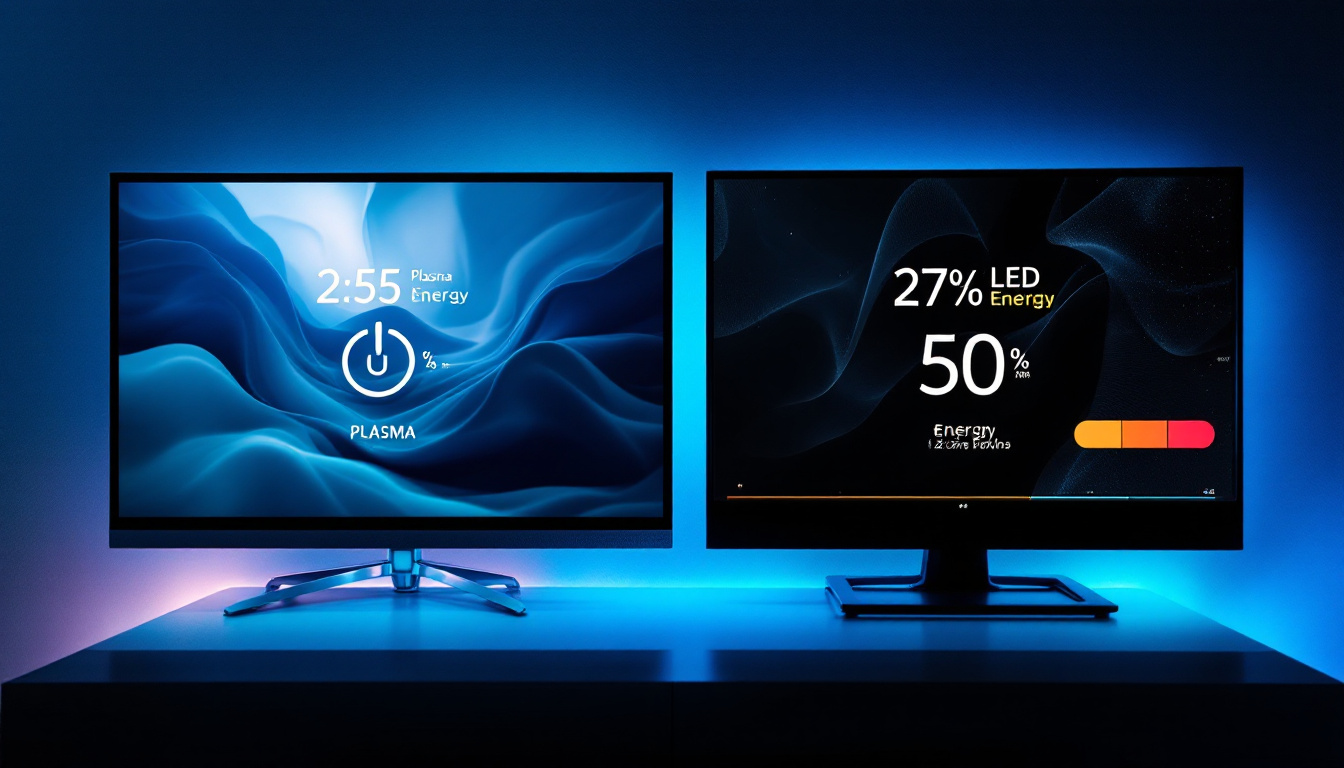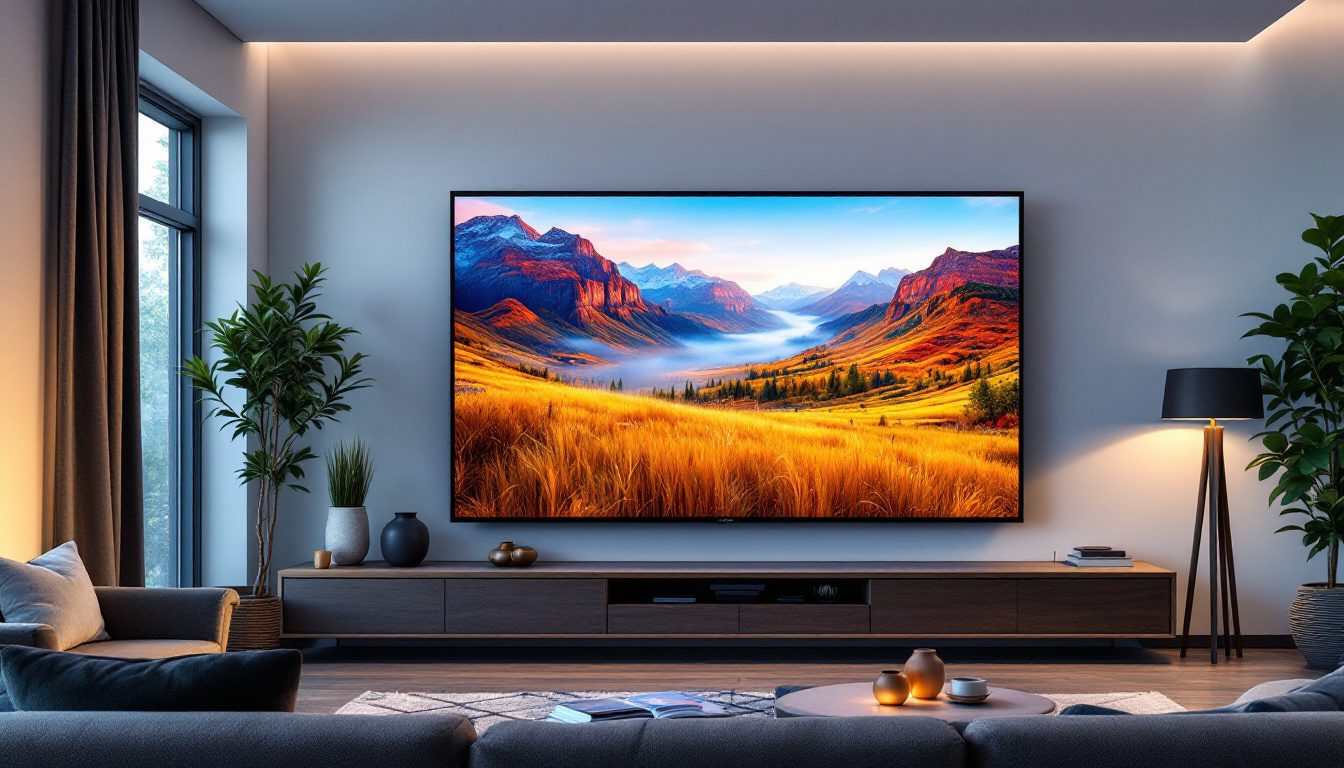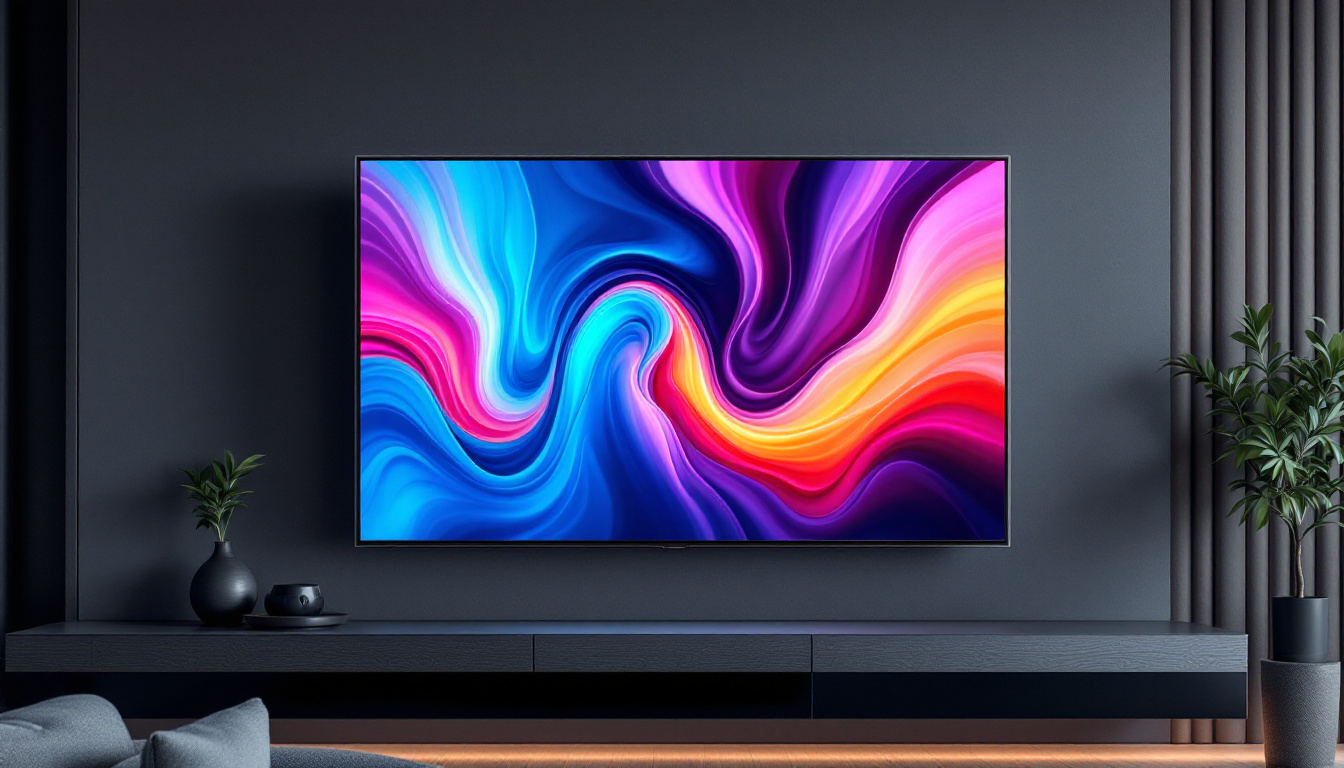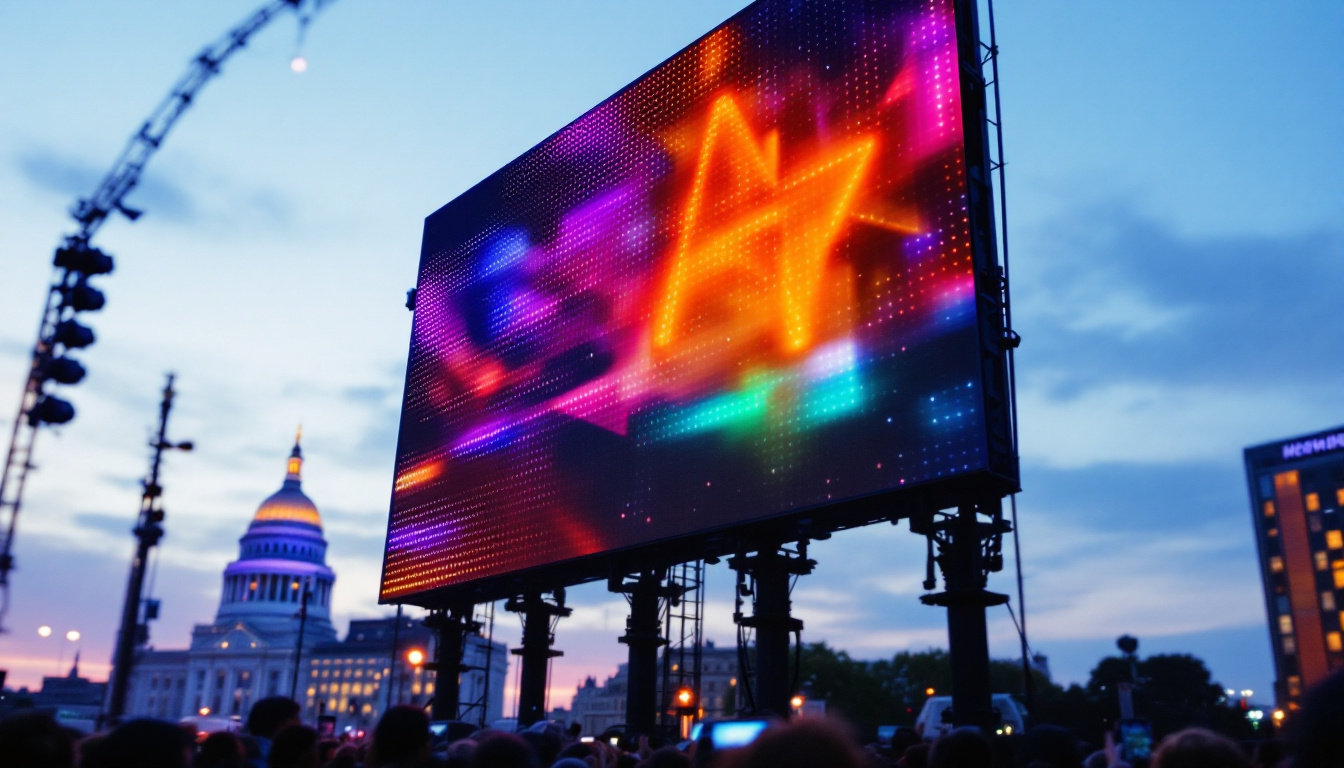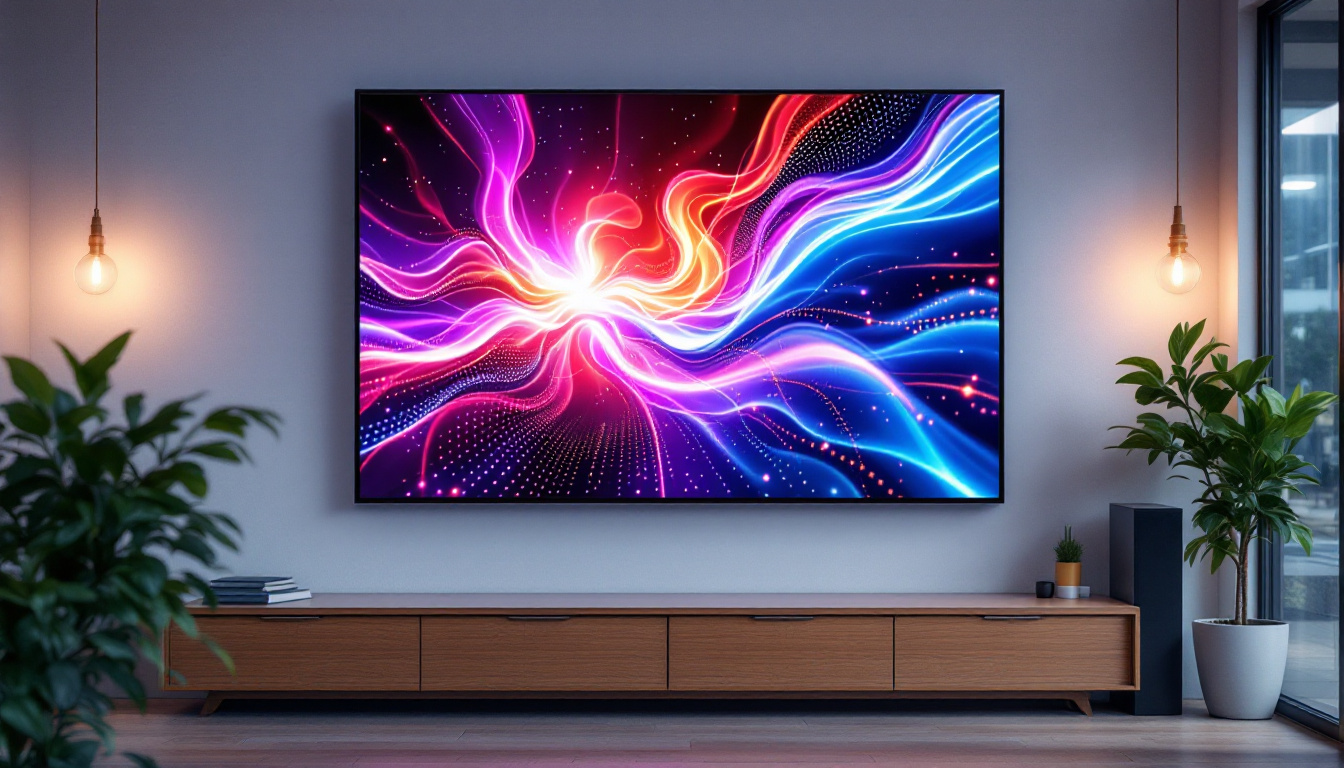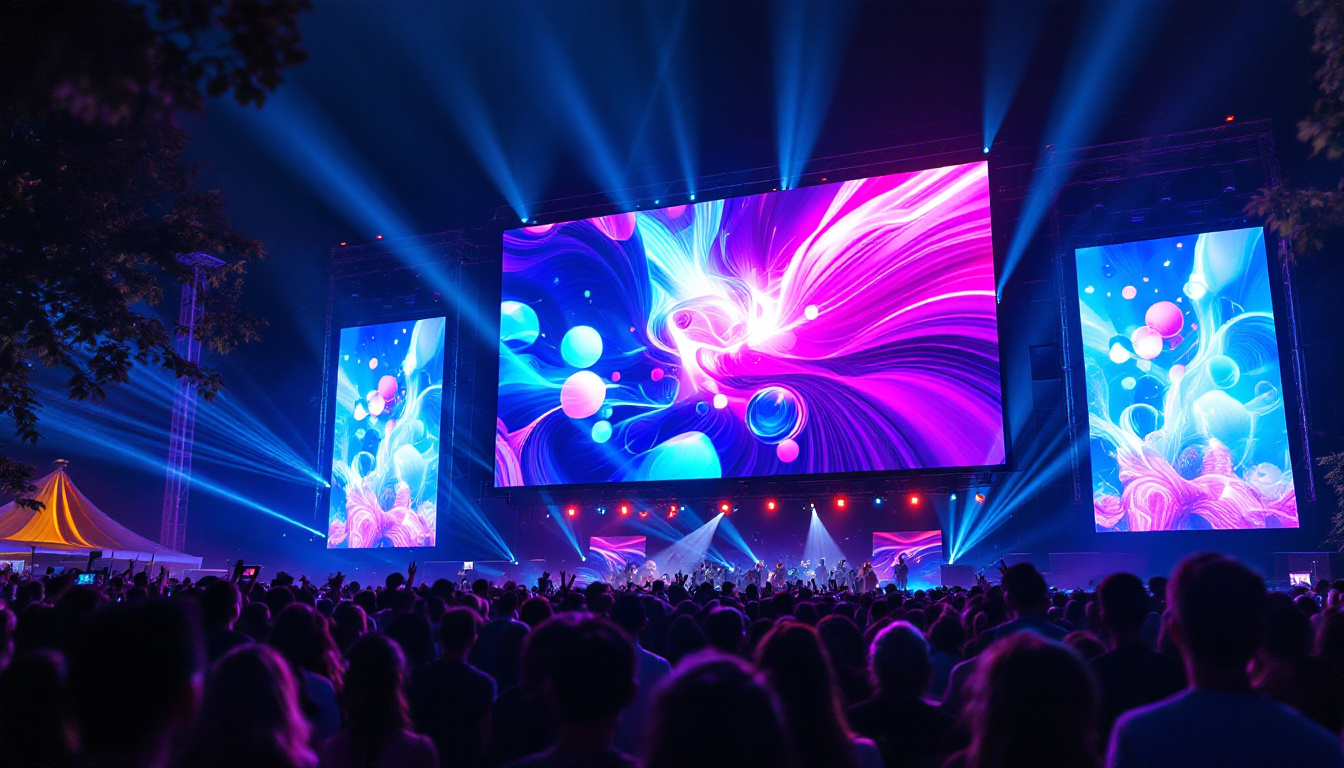Plasma TV Energy Consumption: LED Display Explained
In the realm of home entertainment, the choice between different types of television displays can be overwhelming. Among the most popular options are Plasma and LED TVs, each boasting unique features and capabilities. One critical factor that often influences consumer decisions is energy consumption. Understanding how these technologies differ in energy usage can help consumers make informed choices that align with their preferences and environmental considerations.
Understanding Plasma TV Technology
Plasma TVs utilize a technology that involves small cells filled with gas, which emits ultraviolet light when electrified. This light then excites phosphors to produce the colors we see on the screen. While plasma technology was once the gold standard for large-screen televisions, it has become less common in recent years due to the rise of more energy-efficient alternatives. Despite this decline, many enthusiasts still appreciate the unique qualities of plasma displays, including their ability to produce deep blacks and vibrant colors, which are often favored by cinephiles and gamers alike.
Energy Consumption of Plasma TVs
One of the most significant drawbacks of plasma TVs is their energy consumption. On average, a plasma TV consumes between 150 to 300 watts, depending on the size and brightness settings. This is notably higher than many LED models, which can operate at a fraction of that power. The energy consumption can vary based on factors such as screen size, brightness settings, and the content being displayed. For instance, watching bright, colorful content can lead to increased power usage, while darker scenes may reduce energy draw.
Moreover, plasma TVs are known for generating more heat than their LED counterparts. This not only impacts energy efficiency but can also lead to increased cooling costs in warmer climates. As a result, homeowners may find that their electricity bills rise significantly when using plasma technology, especially if the TV is used for extended periods. Interestingly, some users have reported that the heat generated by plasma TVs can be a double-edged sword; while it may contribute to higher energy costs, it can also provide a slight warmth to a room during cooler months, which some may find beneficial.
Longevity and Maintenance
Another aspect to consider is the lifespan of plasma TVs. Typically, these displays have a lifespan of around 30,000 to 60,000 hours. While this may seem adequate, it pales in comparison to LED TVs, which can last up to 100,000 hours or more. The shorter lifespan of plasma TVs means that consumers may need to replace them more frequently, leading to additional costs and environmental waste. Additionally, the decline in plasma technology’s popularity has made it increasingly difficult to find replacement parts, which can pose a challenge for those looking to extend the life of their plasma set.
Furthermore, plasma TVs require more maintenance in terms of calibration and adjustments to maintain optimal picture quality. This can lead to further energy consumption as users may need to frequently tweak settings to achieve the desired visual experience. Calibration can be a meticulous process, often requiring specialized tools or professional assistance, which can add to the overall cost of ownership. Despite these challenges, many users find the effort worthwhile, as a well-calibrated plasma TV can deliver stunning picture quality that remains unmatched by many modern displays, particularly in terms of color accuracy and motion handling.
Exploring LED Display Technology
LED (Light Emitting Diode) technology has gained immense popularity due to its energy efficiency and superior performance. Unlike plasma TVs, LED displays use a backlighting system that illuminates the screen, allowing for brighter images and better contrast ratios. This technology has revolutionized the television market, making it more appealing to consumers concerned about energy consumption. The advancements in LED technology have also led to the development of various display types, including OLED (Organic Light Emitting Diode) and QLED (Quantum Dot LED), each offering unique benefits while retaining the core advantages of traditional LED displays.
Energy Efficiency of LED TVs
LED TVs are known for their remarkable energy efficiency. On average, these displays consume between 30 to 100 watts, significantly less than plasma TVs. This lower power consumption translates to reduced electricity bills, making LED TVs a more economical choice for consumers. Additionally, many LED models come equipped with energy-saving features, such as automatic brightness adjustment and sleep timers, further enhancing their efficiency. These features not only help in conserving energy but also ensure that the viewing experience is optimized according to ambient lighting conditions, providing a more comfortable experience for viewers.
The energy savings associated with LED TVs can be substantial over time. For instance, if a household watches a TV for four hours a day, the difference in energy consumption between a plasma and an LED TV can lead to savings of hundreds of dollars over the lifespan of the television. This not only benefits the wallet but also contributes to a reduced carbon footprint. Moreover, as more consumers make the switch to LED technology, the cumulative effect can lead to significant reductions in overall energy demand, positively impacting the environment on a larger scale.
Longevity and Durability
LED TVs also excel in terms of longevity. With a lifespan that can exceed 100,000 hours, these displays are built to last. This extended lifespan means that consumers are less likely to need replacements, reducing both costs and electronic waste. Furthermore, LED technology is generally more robust, making these TVs less susceptible to burn-in issues that can plague plasma displays. The durability of LED TVs is enhanced by their solid-state construction, which is less prone to damage compared to older technologies that rely on fragile components.
As a result, LED TVs not only provide a better viewing experience but also align with sustainability goals by minimizing waste and energy consumption over time. This makes them a more responsible choice for environmentally conscious consumers. Additionally, many manufacturers are now focusing on eco-friendly production methods and recyclable materials, further emphasizing the role of LED technology in promoting a greener future. As consumers become more aware of the environmental impact of their purchases, the demand for sustainable electronics is likely to grow, encouraging further innovation within the LED display market.
Comparing Energy Consumption: Plasma vs. LED
When comparing the energy consumption of plasma and LED TVs, the differences are stark. Plasma TVs typically consume two to three times more energy than their LED counterparts. This disparity is crucial for consumers who are mindful of their energy usage and the associated costs.
Cost Implications
The initial purchase price of a television is just one part of the overall cost of ownership. Energy consumption plays a significant role in the long-term expenses associated with a TV. Over time, the higher energy consumption of plasma TVs can lead to significantly higher electricity bills. For example, a household using a plasma TV for four hours a day could see annual energy costs that are substantially higher than those of an LED TV.
In many cases, the savings on energy bills can offset the initial price difference between LED and plasma TVs. This makes LED models not only a more environmentally friendly option but also a more financially sound choice in the long run.
Environmental Impact
The environmental implications of energy consumption cannot be overlooked. Plasma TVs contribute to higher energy demand, which can strain power grids and lead to increased greenhouse gas emissions. In contrast, LED TVs, with their lower energy consumption, help reduce the overall carbon footprint of households.
As more consumers become aware of their environmental impact, the shift towards energy-efficient technologies like LED displays is likely to continue. Choosing an LED TV over a plasma model is a step towards a more sustainable future, benefiting both the individual and the planet.
Additional Factors to Consider When Choosing a TV
While energy consumption is a crucial factor in selecting a television, it is not the only consideration. Various aspects can influence the decision-making process, including picture quality, viewing habits, and personal preferences.
Picture Quality
Picture quality is often at the forefront of consumers’ minds when choosing a TV. Plasma displays are renowned for their superior color accuracy and deep blacks, making them a favorite among home theater enthusiasts. However, advancements in LED technology have led to significant improvements in picture quality, with many modern LED TVs offering vibrant colors and impressive contrast ratios.
Ultimately, the choice between plasma and LED may come down to personal preference regarding picture quality. Consumers should consider their viewing habits and the types of content they enjoy when making their decision.
Viewing Environment
The environment in which the TV will be placed also plays a vital role. Plasma TVs can struggle in bright rooms due to glare and reflection, while LED TVs tend to perform better in well-lit spaces. For those who watch TV in a brightly lit living room, an LED display may be the more suitable option.
Conversely, for dedicated home theater setups with controlled lighting, a plasma TV may provide the immersive experience that enthusiasts desire. Understanding the viewing environment can help consumers make a more informed choice.
Conclusion: Making the Right Choice
In conclusion, the choice between plasma and LED TVs hinges on various factors, with energy consumption being a significant consideration. Plasma TVs, while offering exceptional picture quality, fall short in terms of energy efficiency and longevity compared to LED displays. The latter not only consume less power but also boast extended lifespans and lower environmental impacts.
For consumers looking to make a responsible and economical choice, LED TVs emerge as the clear winner. They provide a balance of performance, energy efficiency, and sustainability that aligns with modern values. As technology continues to evolve, the trend towards energy-efficient displays is likely to shape the future of home entertainment.
Ultimately, understanding the differences in energy consumption and other factors will empower consumers to make informed decisions that best suit their needs and preferences. Whether it’s for watching movies, gaming, or simply enjoying television, the right choice can enhance the viewing experience while being kind to the environment.
Discover the Future of Visual Experience with LumenMatrix
As you consider the environmental and economic benefits of LED TVs, we invite you to explore the innovative world of LumenMatrix. Our commitment to excellence in LED display technology ensures that you not only enjoy lower energy consumption but also experience unparalleled visual quality. From captivating Indoor LED Wall Displays to dynamic Outdoor LED Wall solutions and beyond, LumenMatrix offers a wide array of products designed to transform your viewing experience. Check out LumenMatrix LED Display Solutions today and step into a brighter, more sustainable future of home entertainment and visual communication.

